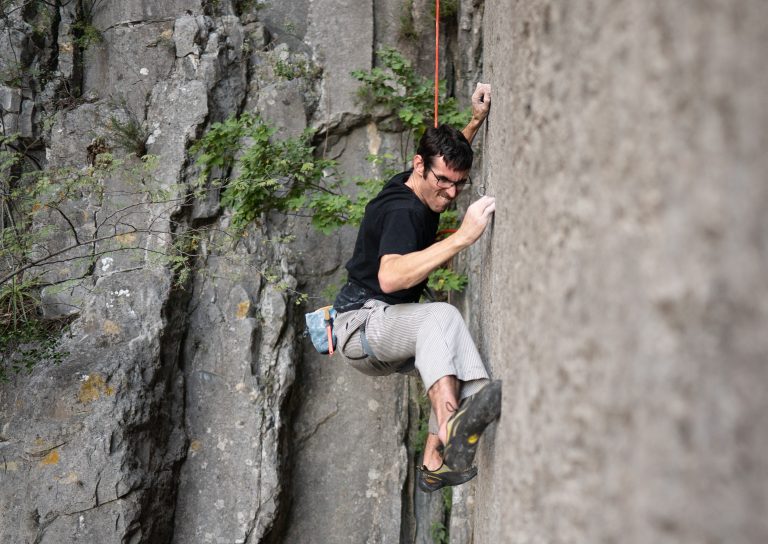
It’s time to replace your climbing shoes when the rubber on the sole is worn down and the shoe no longer provides optimal grip. Climbing shoes should be replaced once they start to show signs of wear and tear, such as bulging or delaminating of the rubber, a loss of sensitivity in the shoes, or holes forming in the upper material.
These signs indicate that the shoe’s performance and safety may be compromised, and it is time to invest in a new pair. Properly maintaining and replacing climbing shoes ensures a safe and enjoyable climbing experience while maximizing performance. Let’s explore in more detail when to replace climbing shoes and why it is important to do so.
When to Replace Climbing Shoes: Factors to Consider
| Factors to Consider For Replacing Climbing Shoes |
|
|
|

Identifying Climbing Shoes Conditions
Replacing climbing shoes at the right time is crucial to ensure safety and optimal performance on the rock. One of the signs to look out for is outsole deterioration, where the rubber on the bottom of the shoes starts to wear down unevenly or lose its grip. This can result in reduced traction and stability while climbing.
Another indication is rubber fraying along the edges or in high-impact areas. This indicates that the shoe is reaching the end of its lifespan and may not provide adequate support.
Additionally, pay attention to any deformation in the toe box, such as a collapsed or flattened shape. This can affect your ability to edge and smear effectively. When multiple signs of wear and tear are observed, it’s time to invest in a new pair of climbing shoes to ensure your safety and performance on the wall.
Performance Checking of Climbing Shoes
Climbing shoes are an essential piece of gear for any serious climber, but like any equipment, they eventually wear out and need to be replaced. Recognizing the signs of performance deterioration is crucial to ensure your safety and enjoyment while climbing. Loss of sensitivity is one of the indicators that your shoes may need replacing. As the shoe’s rubber sole wears down over time, you may experience a decrease in sensitivity, making it harder to feel the surface beneath you.
Additionally, decreased grip is another clear indication that it’s time for new shoes. If you find yourself slipping more frequently or struggling to maintain traction on holds, it may be time to invest in a new pair.
Finally, reduced edge performance can significantly impact your climbing ability. If you notice that you’re having trouble maintaining control on smaller holds or maintaining an edge, it’s a clear sign that your shoes are no longer providing the necessary support. Keep an eye out for these signs to ensure you’re always climbing in peak condition.
Understanding The Impact Of Age On Climbing Shoes
Understanding the impact of age on climbing shoes is crucial to determine when it’s time to replace them. One important factor to consider is the material breakdown. Over time, the materials used in climbing shoes can deteriorate, leading to a decrease in performance and safety.
The weakening of adhesive bonds is another significant issue. Adhesive bonds hold the different components of the shoe together, and as they age, they can become less effective, compromising the shoe’s overall integrity. This poses risks to both stability and durability.
Additionally, the structural integrity of climbing shoes can be compromised with age, raising concerns about their ability to support the foot adequately. It’s important to regularly inspect climbing shoes for signs of wear, such as delamination, worn-out soles, or visible damage. In conclusion, understanding the impact of age on climbing shoes is crucial for maintaining both performance and safety during climbing activities.
Strategies To Extend The Lifespan Of Climbing Shoes
One effective strategy to extend the lifespan of climbing shoes is to rotate them. By alternating between multiple pairs, you can distribute the wear and tear more evenly, preventing one pair from deteriorating too quickly. Proper cleaning and maintenance also play a crucial role in keeping your shoes in good condition.
Cleaning and Maintenance:
- Regularly remove dirt and debris from the shoes.
- Use a soft brush or cloth to clean the upper and sole.
- Avoid using harsh chemicals or submerging the shoes in water.
- Allow them to air dry after each use.
- Inspect the shoes for any damage and address it promptly.
Shoe Resoling Options:
| Option | Description |
|---|---|
| Manufacturer’s Resoling | Send the shoes back to the manufacturer for professional resoling. |
| Local Cobbler | Find a skilled cobbler who can resole your climbing shoes. |
| DIY Resoling | Try resoling the shoes yourself using a resoling kit. |
By implementing these strategies and taking care of your climbing shoes, you can maximize their lifespan and save money in the long run.
Replacing Climbing Shoes: Expert Recommendations
Replacing climbing shoes at the right time is crucial for maintaining optimal performance and safety on the rocks. Professional climbers and climbing gear manufacturers offer valuable insights to ensure your shoes are in top condition.
Experienced climbers advise assessing the condition of your shoes by inspecting the sole and upper for signs of wear and tear. If the rubber on the sole is significantly worn down or the upper material starts to out of order, it may be time for a replacement rather selling worn shoes.
Climbing gear manufacturers generally recommend replacing shoes when the rubber becomes smooth, loses its stickiness, or develops cracks. The loss of grip can compromise your ability to confidently grip holds, increasing the risk of slips and falls.
It’s important to note that different climbing styles and frequency of use can influence the lifespan of your shoes. Regular monitoring and early replacement ensure you can climb with confidence and ensure your shoes provide the necessary support and performance.
User’s on When to Replacing Climbing Shoes
How Do You Know If Climbing Shoes Are Worn Out?
To know if climbing shoes are worn out, check for signs such as a thin or worn-out sole, loose or stretched-out fit, and decreased grip on the rock. Inspect for any visible damage or holes and consider the shoe’s overall comfort and support.
Replacing worn-out climbing shoes is crucial to maintain performance and safety.
How Long Do Climbing Shoes Normally Last?
Climbing shoes generally last around two to three years with regular use. The lifespan depends on factors like frequency of use, type of climbing, and how well they are maintained. Proper care and storage can help extend their durability.
How Often Do Climbing Shoes Wear Out?
Climbing shoes wear out depending on usage. Frequency can vary, but generally, they last for 6-12 months for regular climbers. It’s important to check the rubber sole for wear and tear as it affects performance and safety. Replace them when they become smooth or develop holes.
Do Climbing Shoes Expire?
Climbing shoes do not have an expiration date. However, their performance and effectiveness may diminish over time with regular use and wear. It is important to inspect and replace climbing shoes when they show signs of excessive wear, such as a worn-out sole or significant loss of shape.
Finally, regular maintenance and care can help prolong their lifespan.
|
Serial |
Relevant Topics |
|
1 |
|
|
2 |
|
|
3 |
|
|
4 |
Last Talk: When To Replace Climbing Shoes
It is important to keep an eye on the condition of your climbing shoes to ensure you are getting the best performance and safety. Regularly inspect them for wear and tear, evaluate the loss of rubber, and consider discomfort or lack of functionality.
By replacing your climbing shoes at the right time, you can continue to enjoy your climbing adventures to the fullest. Happy climbing!
